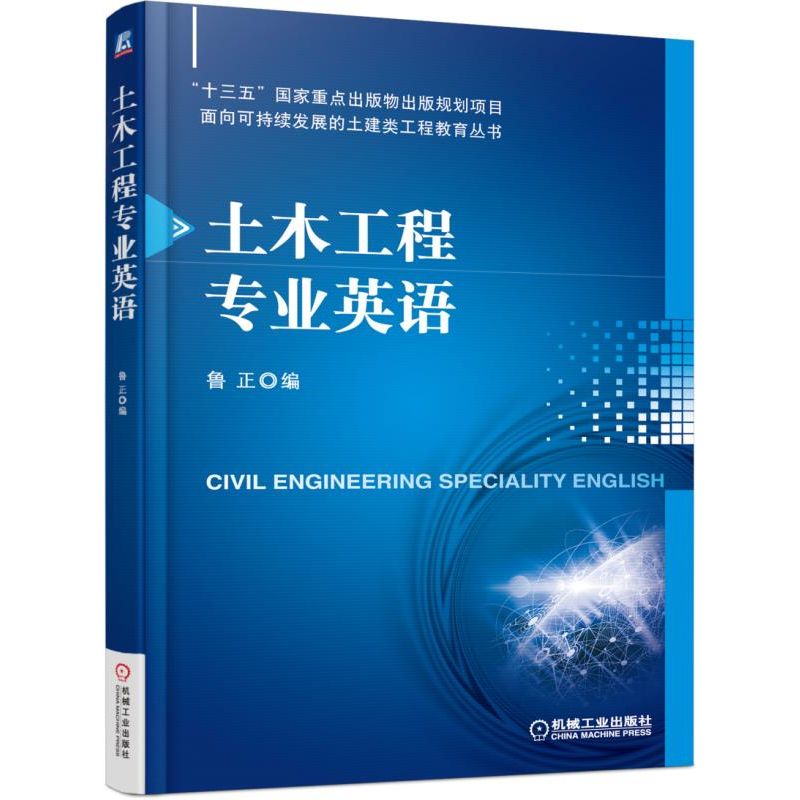催化材料的表征 / 材料表征原版系列丛书
定价:¥68.00
作者: [美]布伦德尔 埃文斯 沃克斯
出版时间:2014-01
出版社:哈尔滨工业大学出版社
- 哈尔滨工业大学出版社
- 9787560342771
- 167941
- 2014-01
- TQ426
内容简介
《催化材料表征》是一本现代的综合性参考书,包括商业应用中的催化材料的分析。这本书提供了对每种催化材料性能理解的信息,讨论了这些材料在不同技术中的应用,如污染控制、化学与石油加工。每章都是由各自领域内国际公认的专家所撰写,按照催化剂种类,表面、界面和可能需要的块体表征类型进行组织,以方便参考。从材料角度撰写,催化材料的表征一书重点在于测试的性能而不是使用的技术。本书由布伦德尔、埃文斯、沃克斯著。
目录
Preface to the Reissue of the Materials Characterization Series
Preface to Series
Preface to the Reissue of Characterization of Catalytic Materials
Preface
Contributors
BULK METALS AND ALLOYS
1.1 Introduction
The Role of Metals and Alloys in Catalysis
1.2 Preparation of Bulk Alloy or Bimetallic Catalysts
1.3 Bulk Metal Characterization Methods
Bulk Chemical Analysis 4, Determination of Crystal
Structure 5, Morphology and Microstructure 6, Quantification
of Surface Area 8, Surface Composition 9, Gas-Surface
Interactions 11, Surface Structure of Single Crystals and Metal Films
1.4 Surface Composition-Structure and Catalysis Relationship
SUPPORTED METALS
2.1 Introduction
Characteristics of Supported Metals 18, Conditions
of Characterization of Supported Metals
2.2 Typical Approaches to Metals Characterization
Chemisorption 19, Methods of Measuring Chemisorption
2.3 Reaction Studies of Supported Metals
2.4 X-ray Diffraction and Scattering Methods
Particle Sizes from Line-Broadening 27, Small-Angle X-ray Scattering
2.5 Electron Microscopy
2.6 X-ray Absorption Spectroscopy
Preparation for Measurements 32, Interpretation of
Information 32, Strengths and Weaknesses of XAS
2.7 Massbauer Spectroscopy
2.8 Photoelectron/Photoemission Spectroscopy
2.9 Magnetic Methods
2.10 Summary
BULK METAL OXIDES
3.1 Introduction
Oxides as Catalysts 47, Mechanistic Features of Oxide Catalyzed Reactions
3.2 Synthesis Methods
3.3 Properties of Oxides and Their Relation to Catalytic Behavior 51
Determination of Bulk Structure 51, Bulk Composition 57, Metal Oxidation
State and Local Structural Environment 57, Characterization by Electron
Microscopy 60, Surface Characterization Using Molecular Probes 61,
Surface Characterization Using Spectroscopic Analyses 63, Reducibility
and Oxide Ion Mobility 64, Magnetic and Electronic Properties 65
3.4 Summary
SUPPORTED METAL OXIDES
4.1 Introduction
4.2 Synthesis Methods
4.3 Characterization
Structure of the Supported Metal Oxide Phase 71, Surface Coverage
of the Supported Metal Oxide Phase 73, Oxidation States and Local
Structural Environments of Supported Metal Oxide Phases 75, Morphology
of the Supported Metal Oxide Phase 77, Surface Chemistry of
Supported Metal Oxides 77, Characterization Summary
4.4 Impregnating Solution Chemistry
4.5 Supported Metal Oxide Catalysts Under Ambient Conditions
4.6 Supported Metal Oxide Catalysts Under In Situ Conditions
4.7 Catalysis and Structure-Reactivity Relationship
4.8 Summary
5.1 Introduction
5.2 Preparation of Bulk TMS Catalysts
Binary Sulfides 90, Mixed Metal Sulfides
5.3 Bulk Characterization
Structures of TMS and Stable Catalytic Phases 92, Morphology, Particle Size,
and Surface Area 94, Metal Oxidation State and Structural Environment
5.4 Surface Composition
Chemisorption and Molecular Probes 96, Surface
Characterization Using Spectroscopic Techniques
5.5 Structure-Function Relationships
Importance of the Electronic Structure 100, Effect of the Crystallographic
Structure 102, Effect of the Sulfur Vacancies
5.6 Summary
SUPPORTED METAL SULFIDES
6.1 Introduction
6.2 Structure of the Oxidic Catalyst
6.3 Structure of the Sulfidic Catalyst
Structure of Molybdenum 114, Structure of Cobalt and Nickel
6.4 Specific Surface Area
6.5 Structure-Reactivity Relationships
Role of Molybdenum 121, Roleofthe Promoter 122, Role of Phosphate
6.6 Summary
ZEOLITES AND MOLECULAR SIEVES
7.1 Introduction
7.2 Structure of Zeolites and Molecular Sieves
7.3 X-ray, Neutron, and Electron Diffraction
Identification of Zeolites 134, Compositional and Phase
Changes 135, Structure Determination by Diffraction Techniques
7.4 High-Resolution Electron Microscopy
7.5
Preface to Series
Preface to the Reissue of Characterization of Catalytic Materials
Preface
Contributors
BULK METALS AND ALLOYS
1.1 Introduction
The Role of Metals and Alloys in Catalysis
1.2 Preparation of Bulk Alloy or Bimetallic Catalysts
1.3 Bulk Metal Characterization Methods
Bulk Chemical Analysis 4, Determination of Crystal
Structure 5, Morphology and Microstructure 6, Quantification
of Surface Area 8, Surface Composition 9, Gas-Surface
Interactions 11, Surface Structure of Single Crystals and Metal Films
1.4 Surface Composition-Structure and Catalysis Relationship
SUPPORTED METALS
2.1 Introduction
Characteristics of Supported Metals 18, Conditions
of Characterization of Supported Metals
2.2 Typical Approaches to Metals Characterization
Chemisorption 19, Methods of Measuring Chemisorption
2.3 Reaction Studies of Supported Metals
2.4 X-ray Diffraction and Scattering Methods
Particle Sizes from Line-Broadening 27, Small-Angle X-ray Scattering
2.5 Electron Microscopy
2.6 X-ray Absorption Spectroscopy
Preparation for Measurements 32, Interpretation of
Information 32, Strengths and Weaknesses of XAS
2.7 Massbauer Spectroscopy
2.8 Photoelectron/Photoemission Spectroscopy
2.9 Magnetic Methods
2.10 Summary
BULK METAL OXIDES
3.1 Introduction
Oxides as Catalysts 47, Mechanistic Features of Oxide Catalyzed Reactions
3.2 Synthesis Methods
3.3 Properties of Oxides and Their Relation to Catalytic Behavior 51
Determination of Bulk Structure 51, Bulk Composition 57, Metal Oxidation
State and Local Structural Environment 57, Characterization by Electron
Microscopy 60, Surface Characterization Using Molecular Probes 61,
Surface Characterization Using Spectroscopic Analyses 63, Reducibility
and Oxide Ion Mobility 64, Magnetic and Electronic Properties 65
3.4 Summary
SUPPORTED METAL OXIDES
4.1 Introduction
4.2 Synthesis Methods
4.3 Characterization
Structure of the Supported Metal Oxide Phase 71, Surface Coverage
of the Supported Metal Oxide Phase 73, Oxidation States and Local
Structural Environments of Supported Metal Oxide Phases 75, Morphology
of the Supported Metal Oxide Phase 77, Surface Chemistry of
Supported Metal Oxides 77, Characterization Summary
4.4 Impregnating Solution Chemistry
4.5 Supported Metal Oxide Catalysts Under Ambient Conditions
4.6 Supported Metal Oxide Catalysts Under In Situ Conditions
4.7 Catalysis and Structure-Reactivity Relationship
4.8 Summary
5.1 Introduction
5.2 Preparation of Bulk TMS Catalysts
Binary Sulfides 90, Mixed Metal Sulfides
5.3 Bulk Characterization
Structures of TMS and Stable Catalytic Phases 92, Morphology, Particle Size,
and Surface Area 94, Metal Oxidation State and Structural Environment
5.4 Surface Composition
Chemisorption and Molecular Probes 96, Surface
Characterization Using Spectroscopic Techniques
5.5 Structure-Function Relationships
Importance of the Electronic Structure 100, Effect of the Crystallographic
Structure 102, Effect of the Sulfur Vacancies
5.6 Summary
SUPPORTED METAL SULFIDES
6.1 Introduction
6.2 Structure of the Oxidic Catalyst
6.3 Structure of the Sulfidic Catalyst
Structure of Molybdenum 114, Structure of Cobalt and Nickel
6.4 Specific Surface Area
6.5 Structure-Reactivity Relationships
Role of Molybdenum 121, Roleofthe Promoter 122, Role of Phosphate
6.6 Summary
ZEOLITES AND MOLECULAR SIEVES
7.1 Introduction
7.2 Structure of Zeolites and Molecular Sieves
7.3 X-ray, Neutron, and Electron Diffraction
Identification of Zeolites 134, Compositional and Phase
Changes 135, Structure Determination by Diffraction Techniques
7.4 High-Resolution Electron Microscopy
7.5



